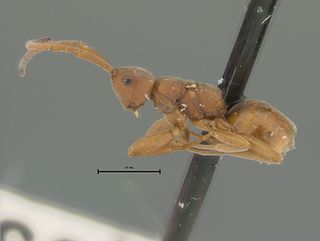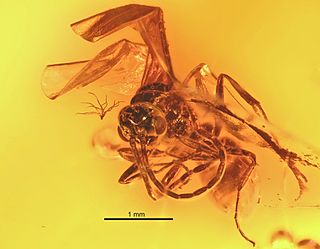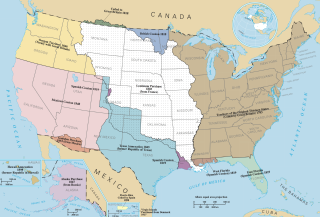
Paraponera clavata is a species of ant, commonly known as the bullet ant, named for its extremely potent sting. It inhabits humid lowland rainforests from Nicaragua and the extreme east of Honduras and south to Paraguay.

Scydmaeninae are a subfamily of small beetles, commonly called ant-like stone beetles or scydmaenines. These beetles occur worldwide, and the subfamily includes some 4,500 species in about 80 genera. Established as a family, they were reduced in status to a subfamily of Staphylinidae in 2009

The Aderidae, sometimes called ant-like leaf beetles, are a family of beetles that bear some resemblance to ants. The family consists of about 1,000 species in about 50 genera, of which most are tropical, although overall distribution is worldwide.

The clouded salamander is a species of salamander in the family Plethodontidae. It is endemic to the United States. Its natural habitat is temperate forests and it is probable that many nest in trees. It is threatened by habitat loss.
Thorius grandis is a species of salamander in the family Plethodontidae. It is endemic to Mexico where it is found in west-central Sierra Madre del Sur in Guerrero. Its natural habitats are pine-fir and pine-oak-fir forests; it tolerates some habitat modification. It usually occurs under logs or the bark of fallen rotting logs. It is threatened by habitat loss caused by logging and expanding agriculture.

Solenopsis molesta, also known as thief ants, get their names from their habit of nesting close to other ant nests, from which they steal food. They are also called grease ants because they are attracted to grease. Nuptial flight in this species occur from late July through early fall.

Ponera is a genus of ponerine ants. The name is the Latinized form of the Ancient Greek ponira.

Alobates pennsylvanica is a species of beetle whose common name is false mealworm beetle. The species is black, has a pronotum that is nearly square, and has at least five rows of fine punctures on each elytra. False mealworm beetles live beneath bark and logs and are found throughout the United States. They have a life span of one year.

Odontoponera is a small Southeast Asia genus of ants in the subfamily Ponerinae.

Paraponera is a genus of ants and the only genus in the subfamily Paraponerinae. The name means "near-Ponera".

Buniapone is a monotypic genus of ants in the subfamily Ponerinae. Buniapone amblyops, the single described species, is found in Southern and Southeast Asia.
Iridomyrmex meridianus is a species of ant in the genus Iridomyrmex, described by Heterick and Shattuck in 2011. The species is endemic to Australia, and nests are commonly found under rocks, logs and rotting wood in forested areas, and they are known to be living in southern areas of Australian states like Western Australia and Tasmania.

Ooperipatellus nanus is a species of velvet worm in the Peripatopsidae family. This species is endemic to New Zealand and is found in the South Island.

Embolemidae is a small family of around 20 species and 2 genera distributed around the world. They are small, sometimes very small, solitary wasps. The biology of the Embolemidae is little known, although a Nearctic species, Embolemus confusuus, was reared from the nymph of a planthopper from the family Achilidae where its host fed on fungi beneath the bark of rotting logs. The parasitoid lived in a bulging sac attached to the host nymph between the second and third segments. The females are wingless while the males have wings and in temperate regions emerge later than the females, which overwinter as adults. The wingless females have been recorded from the nests of ants and small mammal burrows, or under stones in pastures and grasslands and they appear to act as ant mimics. The Palearctic species, Embolemus ruddii has been found in association with the ant species Formica fusca and Lasius flavus, while in Japan Embolemus walkeri was taken in a nest of another ant from the genus Myrmica.

Pachycondyla succinea is an extinct species of ant in the formicid subfamily Ponerinae described from fossils found in Europe. P. petrosa is one of three middle Eocene Pachycondyla species found in Baltic amber.

Tyrannomyrmex alii is a species of tropical ant in the subfamily Myrmicinae. T. alii is native to the Western Ghats in India. The species was described from workers and a winged queen, the first Tyrannomyrmex species in which a queen has been described, while the males are not known. Three additional species are also known, with one also being native to the Western Ghats.

Ponera exotica is a species of ant in the family Formicidae.

















